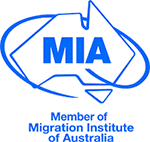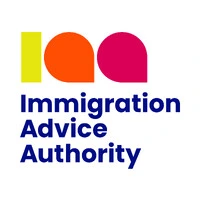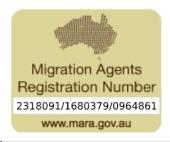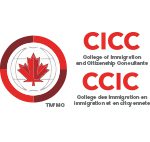Italy Family Reunification Visa (Dependant Visa) Guide
The Italy Family Reunification Visa enables non-EU residents legally living in Italy to be joined by their close family members, ensuring the right to live together on a long-term basis. Through this visa, eligible dependants can obtain entry to Italy and subsequently apply for a residence permit. This guide provides an overview of the application process, including eligibility criteria, required documentation, and key steps families should be aware of when planning to reunite in Italy.
What is the Italy Dependant Visa (Family Reunification Visa)?
The Italy Family Reunification Visa, also known in Italian as Visto per Ricongiungimento Familiare, is a national long-stay visa that allows non-EU residents in Italy to bring eligible family members to live with them. It provides the opportunity for close relatives to enter Italy with legal status and subsequently apply for a residence permit on family grounds.
Who Can Apply for the Italy Family Reunification Visa
- Spouse or civil partner (provided you are not legally separated)
- Minor children (under 18 years of age)
- Adult children with serious disabilities, dependent due to health or inability to support themselves
- Dependent parents (especially those aged 65+ or unable to be supported in their country of origin when no other relative is able to care for them)
Steps to Apply for the Italy Family Reunification Visa
Step 1: Sponsor applies for the Nulla Osta via One-Stop Shop
The family member already in Italy (the sponsor) submits a request for Nulla Osta (family reunification authorization) through the Sportello Unico per l’Immigrazione (One-Stop Shop) in the province of residence, including required documents on income, housing, relationship, etc.
Step 2: Family member applies for visa at Italian consulate abroad
Once the Nulla Osta is approved, the relative abroad applies for a national (D) visa for family reasons at the Italian consulate or embassy in their country, submitting the visa application with the issued authorization and supporting documents.
Step 3: Arrive in Italy and within 8 days initiate residence procedures
After entering Italy with the visa, the dependant must apply for a Permesso di Soggiorno (residence permit for family reasons) within 8 days, using the immigration kit at the Post Office or at the local Questura / immigration office.
Italy Family Reunification Visa Requirements
Here are the main requirements you’ll need to satisfy when applying for Italy’s family reunification (dependent) visa:
- Proof of adequate income (from lawful sources)
- Suitable housing that meets local health and safety standards
- Proof of family relationship (marriage certificate, birth certificate, etc.)
- Submission of original documents plus certified photocopies
In addition to providing proof of relationship, applicants for the Italy Family Reunification Visa must meet strict financial and housing requirements. These ensure that the sponsor in Italy can adequately support family members without relying on state assistance, and that the accommodation offered meets local living standards.
| Requirement | Details |
| Minimum annual income | At least €7,002.97 (the annual social allowance) for 2025, increased by 50% for each additional family member. |
| Special rule for children under 14 | For two or more children under 14, the required income is double the social allowance (~€14,005.94). |
| Alternate income rule | In some cases, higher thresholds may apply depending on family size (e.g., €11,000 + €3,500 for each additional member). |
| Suitable housing | A housing suitability certificate (Certificato di Idoneità Alloggiativa) must be issued by the local municipality confirming the property meets health, safety, and space standards. |
Italy Family Reunification Visa Processing Time
The processing time for an Italy Family Reunification Visa can vary depending on the local prefecture and the Italian consulate handling the application. On average, the full procedure takes between 3 and 6 months, with each stage contributing to the overall timeline.
| Stage | Typical Timeline |
| Nulla Osta (family authorisation) | 1–2 months, depending on prefecture workload |
| Visa application at consulate | 2–3 months, depending on appointment availability and processing capacity |
| Residence permit (Permesso di Soggiorno) | 1–2 months after arrival, though delays are possible |
Italy Family Reunification Visa & Residence Permit Costs
Below is an overview of the main costs involved in obtaining a family reunification visa and the associated residence permit in Italy. These are standard charges as of the latest information and may vary slightly by local authority.
| Type of Cost | Amount |
| Visa application fee (National D-Visa, family) | ~ €116 |
| Residence permit (Permesso di Soggiorno) — 3 to 12 months | € 40 |
| Residence permit — 12 to 24 months | € 50 |
| Long-term / special permits (EC, Blue Card, family for extended periods) | € 100 |
| Administrative / postal kit | ~ €30 |
| Electronic card issuance fee | ~ €30.46 |
| Stamp duty / tax stamp (marca da bollo) | € 16 |
Rules for EU/EEA Citizens & Their Family Members
EU and EEA citizens have the right to move to and reside freely in Italy under Directive 2004/38/EC, implemented nationally through Legislative Decree No. 30/2007. These rules differ from those applying to non-EU nationals under the Family Reunification Visa.
Key points include:
- Right of entry and residence – EU/EEA citizens and their family members may enter Italy without a visa and reside for up to three months with just a valid identity card or passport.
- Residence beyond three months – They can stay longer if they are workers, self-employed, students, or have sufficient resources and health insurance.
- Family members covered – Spouses or registered partners, dependent children under 21 (or older if dependent), and dependent parents of the EU/EEA citizen or their spouse/partner.
- Residence card for non-EU family members – Non-EU family members must apply for a Residence Card for Family Members of EU Citizens, usually valid for five years.
- Equal treatment – Family members enjoy the same rights as the EU/EEA citizen in terms of work, study, and access to services.
- Restrictions – Rights can only be limited on grounds of public policy, security, or health, and must follow EU law safeguards.
Why Apply with Y-Axis?
Navigating the Italy Family Reunification Visa process can be a challenging procedure. Y-Axis is to assist you with all your visa requirements. Our team of visa and immigration experts will guide you with:
- Choosing the correct type of Visa according to your needs and preferences
- Collecting the required set of documents
- Filling up visa application forms
- Getting you updates and follow-ups
- Preparing for your visa application interview
Our Accreditations |
|||
 |
 |
 |
 |
Frequently Asked Questions
